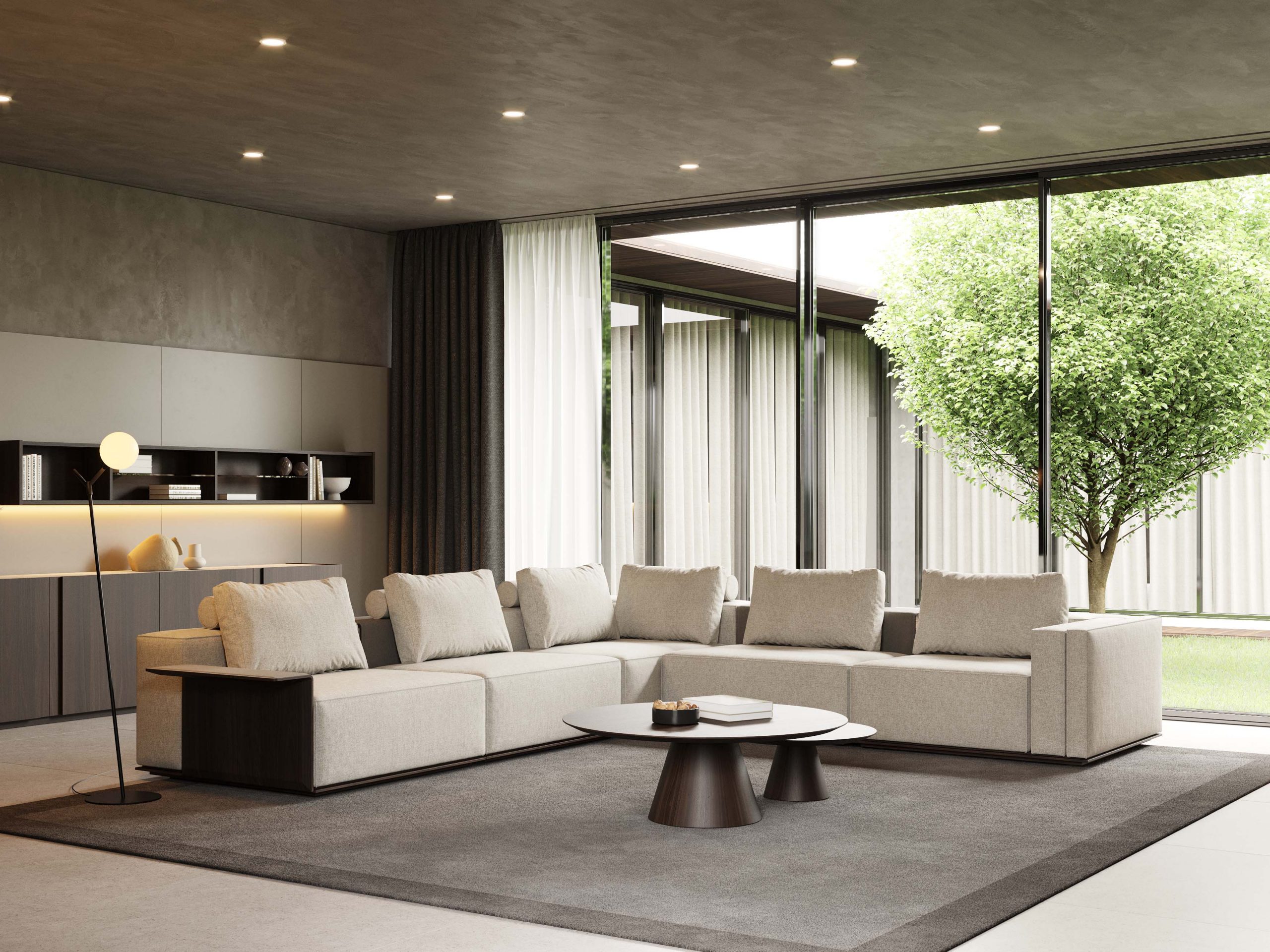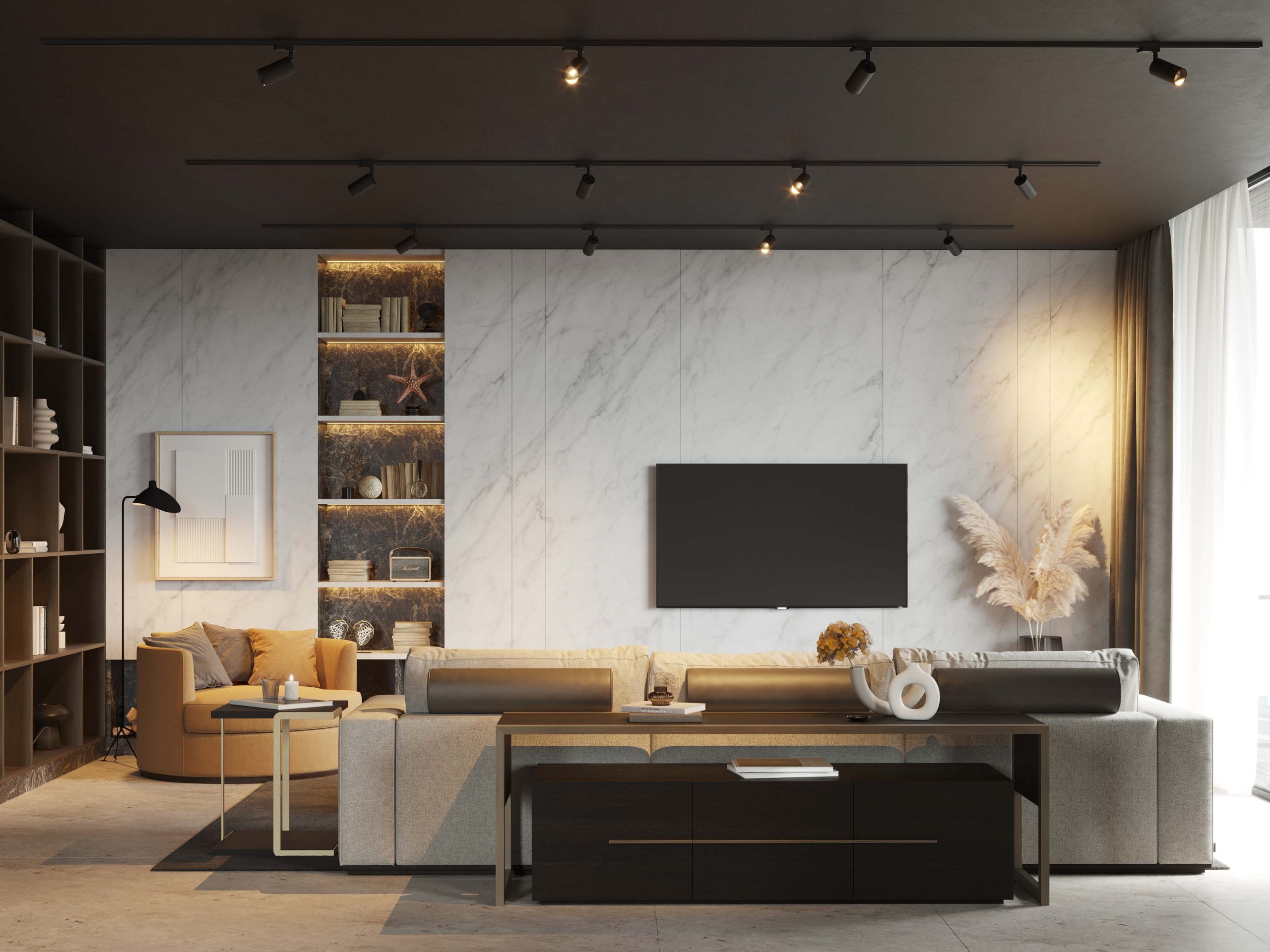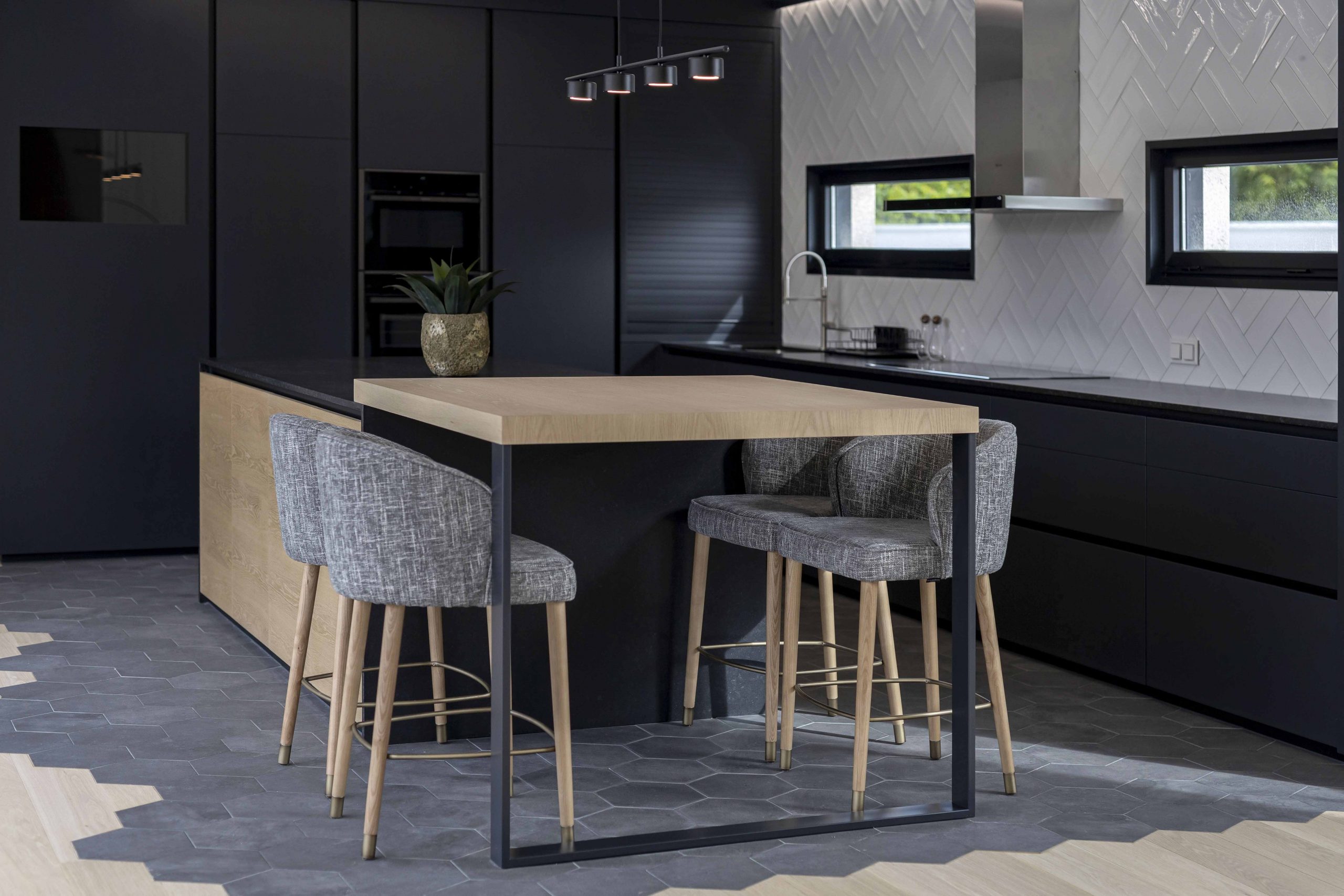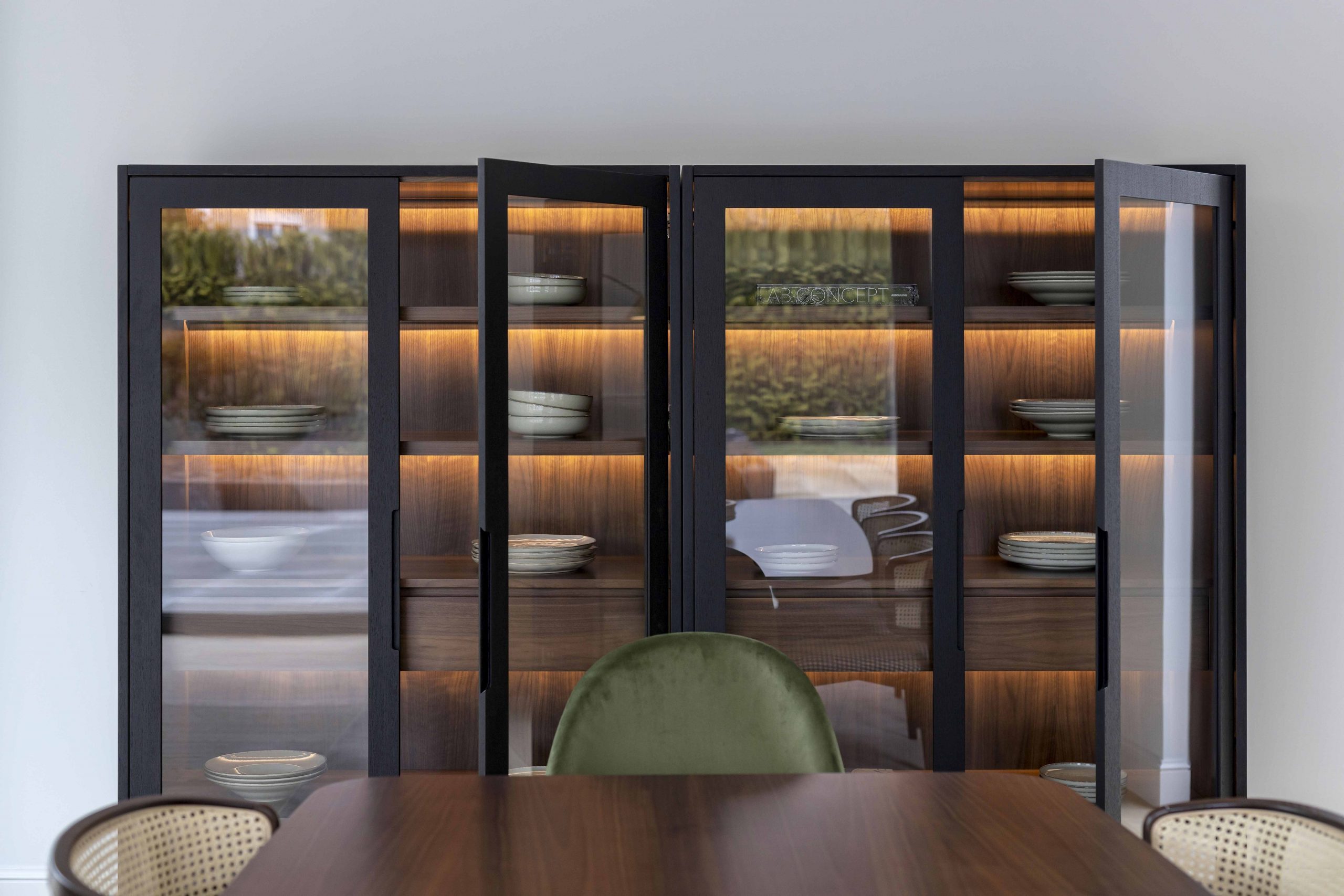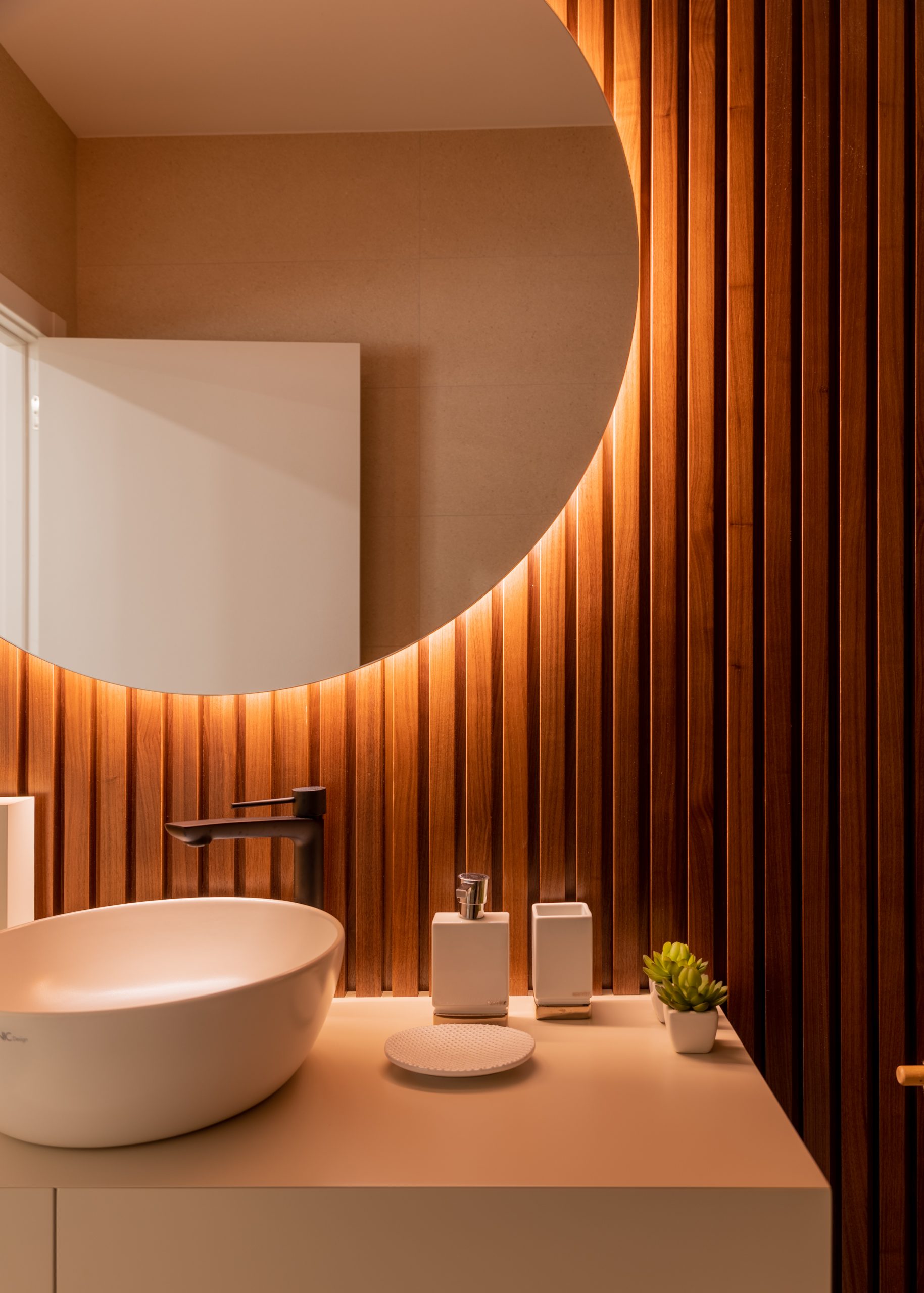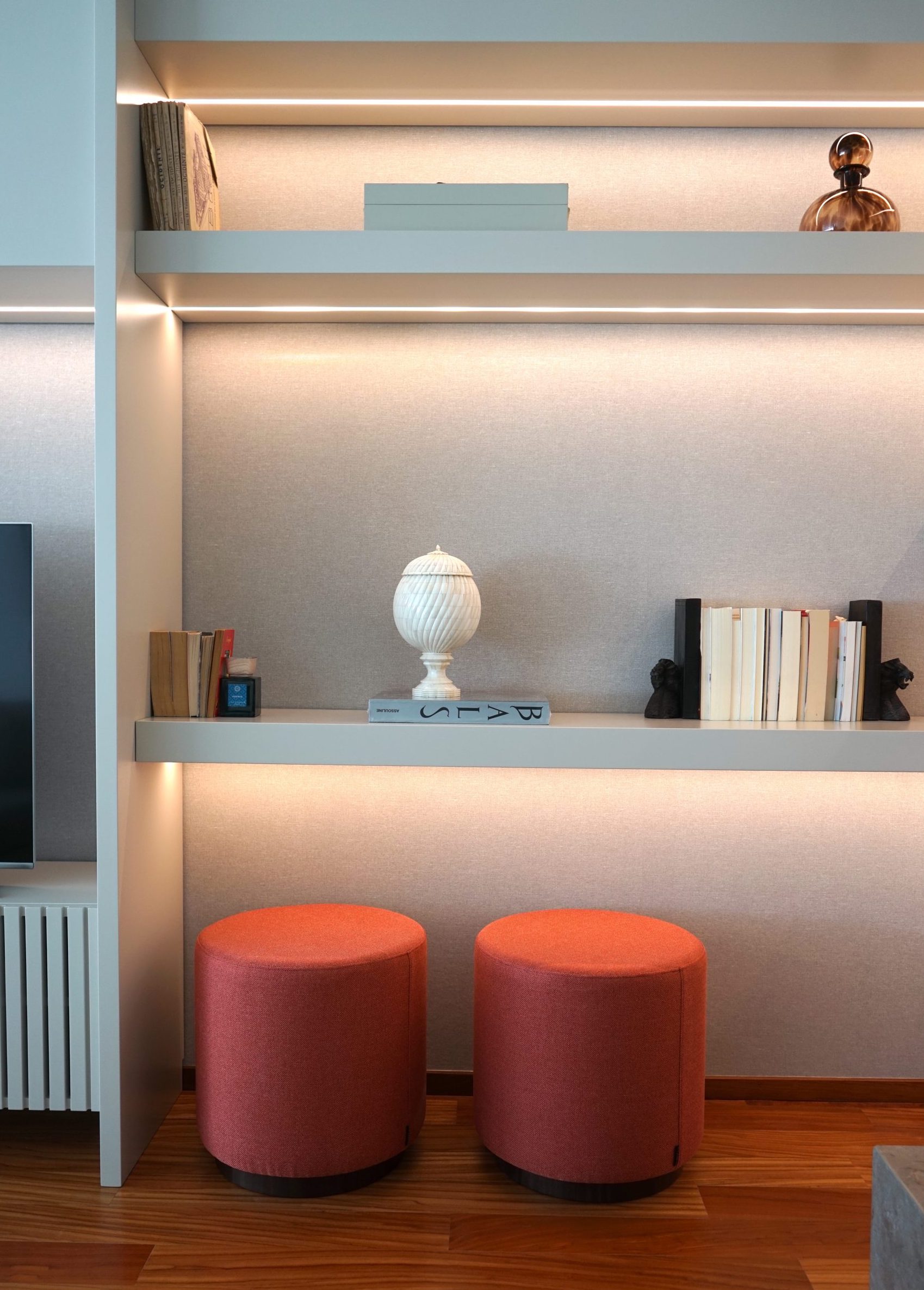Lighting design is a fundamental aspect when it comes to renovating your home. Lighting influences how the size of a space is perceived, provides a good atmosphere, and consequently influences your mood.
We now present the different types of lighting, the designs best suited to your spaces, and the ideal distances so that everything is in perfect harmony.
Importance
Lighting is an element of design as important, if not more important, than any other. Excellent lighting changes and transforms an environment completely. We use light and shadow to make a room more comfortable as well as to produce a more dramatic atmosphere.
This element will join the others that make up an interior design such as the selection of colors, sizes and layout of a space, choice of fabrics and choice of the most appropriate furniture. When all this enters into a symbiotic relationship then we achieve the harmony we so desperately seek.
- Living room with mood lighting
Influence of natural and artificial light
Both daylight and artificial light influence the look of a room completely. Natural light is a much appreciated and valued topic in interior design these days, mainly because it will affect where everything is positioned in the space. A room with large windows allows daylight to pour in, making everything more beautiful and brighter.
Artificial light produces a brighter aura where it makes us feel attracted to that point of light, thus being the ideal choice to accentuate irreverent features of a space. In a kitchen, light on an island or a dining table emphasizes the importance of these areas in the environment, for example. A well-designed artificial lighting scheme will add a bright touch, layers, and depth to your designs.
- Natural light in open space
- Ceiling lighting in dining room
Lighting Design
The different spaces we have at home require different requirements, and with this premise the lighting must follow this line. When implemented correctly , mood, task and accent lighting can transform your home. Find out how:
Ambiance lighting
The first and possibly most important lighting element in a room. This type of lighting provides general illumination of the space. In addition to essential functionality, this type of lighting increases the feeling of comfort and depth of the space, which is usually achieved by opting for recessed lights and ceiling lights scattered throughout the rooms.
- Mood lighting in modern dining room
Task lighting
As the name suggests, task lighting helps you to perform more specific tasks with greater clarity, e.g. reading, preparing meals, watching a movie in more intimate lighting etc. The goal with this type of lighting is to create a shadow-free environment when performing your daily tasks at home. Whether you are cooking, or reading a book, this style ensures that details are properly illuminated.
The most suitable lamps for this purpose are desk lamps, directed ceiling lighting, floor lamps or cabinet lights. Task lighting is used not only as a decorative feature but for a practical purpose.
- Directed lighting in the kitchen island
Accent Lighting
Accent or accent lights add a unique intensity to spaces. As an integral part of an interior design scheme, this is used to attract the most prying eyes, to highlight textures, make a work of art, plants or valuable sculptures stand out. Although they have a functional sense, the main purpose of this lighting is to add style and personalize the space.
- Spotlight on sideboard
Direct, indirect or diffused light
When you apply a lighting system to a room, it is also important that you create a balance between direct and indirect or diffused light. Lamps designed to create a directed light beam give off a direct light. If, on the other hand, the light rays are split or spread through a glass or lampshade, they are usually said to create a diffused light. And light is said to be indirect when the light source is aimed at a reflector or a wall that reflects the light and scatters it.
Direct light = Directed light
Diffused light = Light filtered through a screen, glass, canvas
Indirect light = Light reflected, for example, against a wall
Note that:
- A dark lampshade tends to let much less light through than a lighter lampshade, if you don’t pull it up or down.
- A patterned or perforated lampshade spreads more uneven light, which can create shadow effects and mirrors of light in the room.
- A colored lampshade can create a diffuse and colorful light. A red lampshade makes the whole room red.
- In a colored cloth lampshade with white interior, the light is reflected on the white surface and is less influenced by the color on the outside of the lampshade.
Measurements and distances for glare-free lighting
Functional lighting depends not only on the number of light sources in a room, but also on the height at which lamps are placed, including lamps above the kitchen table.
The ideal height for the lamp depends on how high the light source is inside the lampshade. If the lamp is low, there is a greater risk of creating a glaring effect.
Interior designers usually place lamps 50-60 centimeters above the kitchen table (but the structure of the lamp and the number of family members/residents are factors to consider). At this height, the lamp usually illuminates the entire table without dazzling the people seated, and you also don’t need a lampshade covering the lamp.
Good measurements and distances to apply
- Candelabra above the table: about 70-80 cm above the table
- Chandelier hanging from the ceiling (under which you should be able to pass below): at least 200 cm above the floor;
- A chandelier in a hallway should be at least 200 cm from the floor, or about 30-40 cm above the door frame (to move around freely and avoid being hit by the door)
- A chandelier arranged above a dining table should be hung a little higher than the usual dining table lamps, so as not to disturb the view among the guests. It is usually recommended to hang them about 75-80 cm above the table.
Lighting tips
Putting a table lamp on the TV cabinet adds not only a comfort factor to the room, but something more: a strong TV light and a dark room.
Want to illuminate a work of art? Be aware that glazed frames can reflect light and disturb the observation of the motif. Opt for a comfortable side light rather than illuminating the artwork from the front and install the light source at least one meter away from the subject. For the same reason, avoid hanging glazed pictures in front of large, flickering chandeliers, or in front of windows.
Source: Frida Ramstedt | Feel at Home – The Interior Decorating Handbook
- Ambiance lighting in the bathroom
- Illuminated Bookshelf | Urbanization Project Beach Houses

